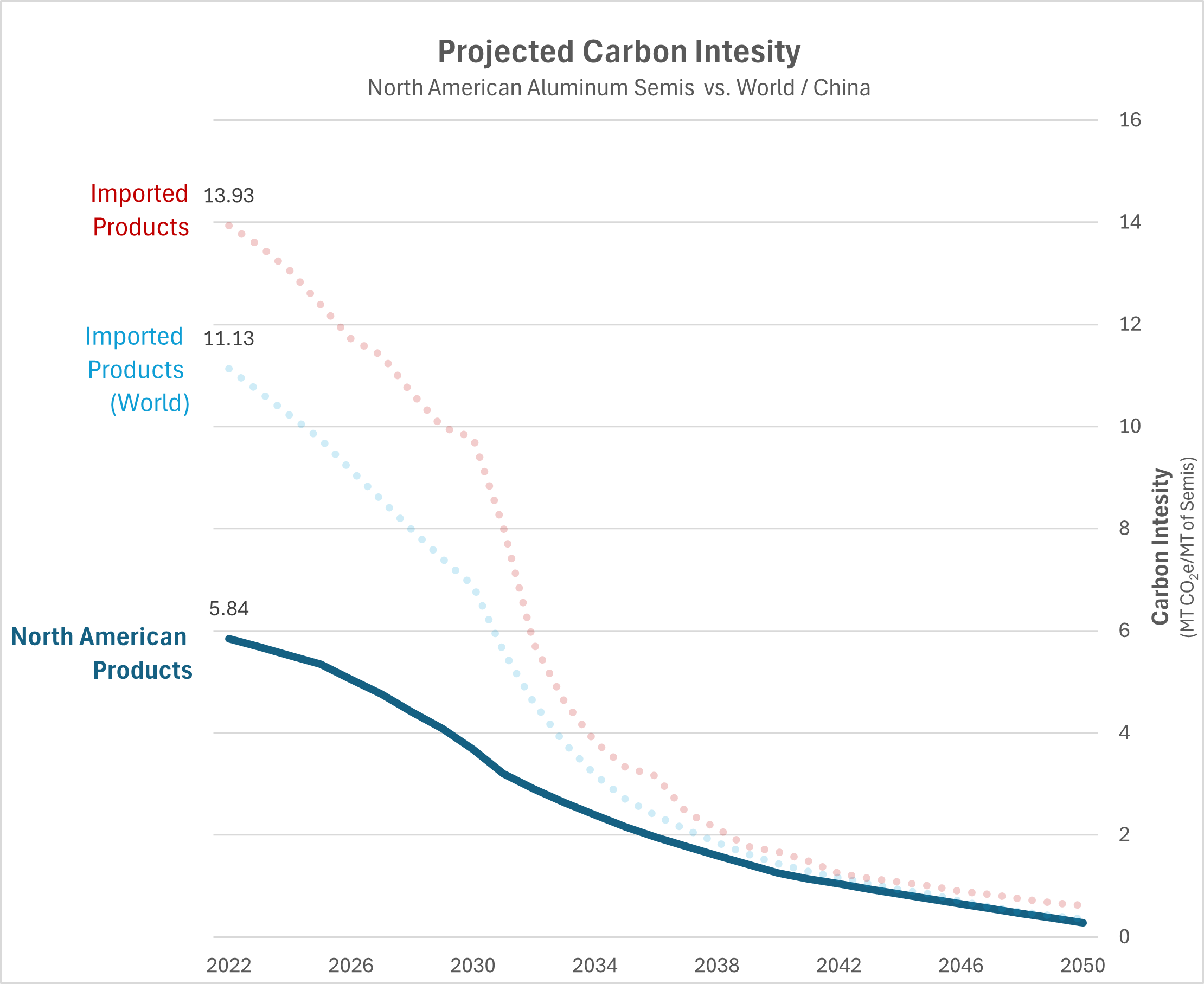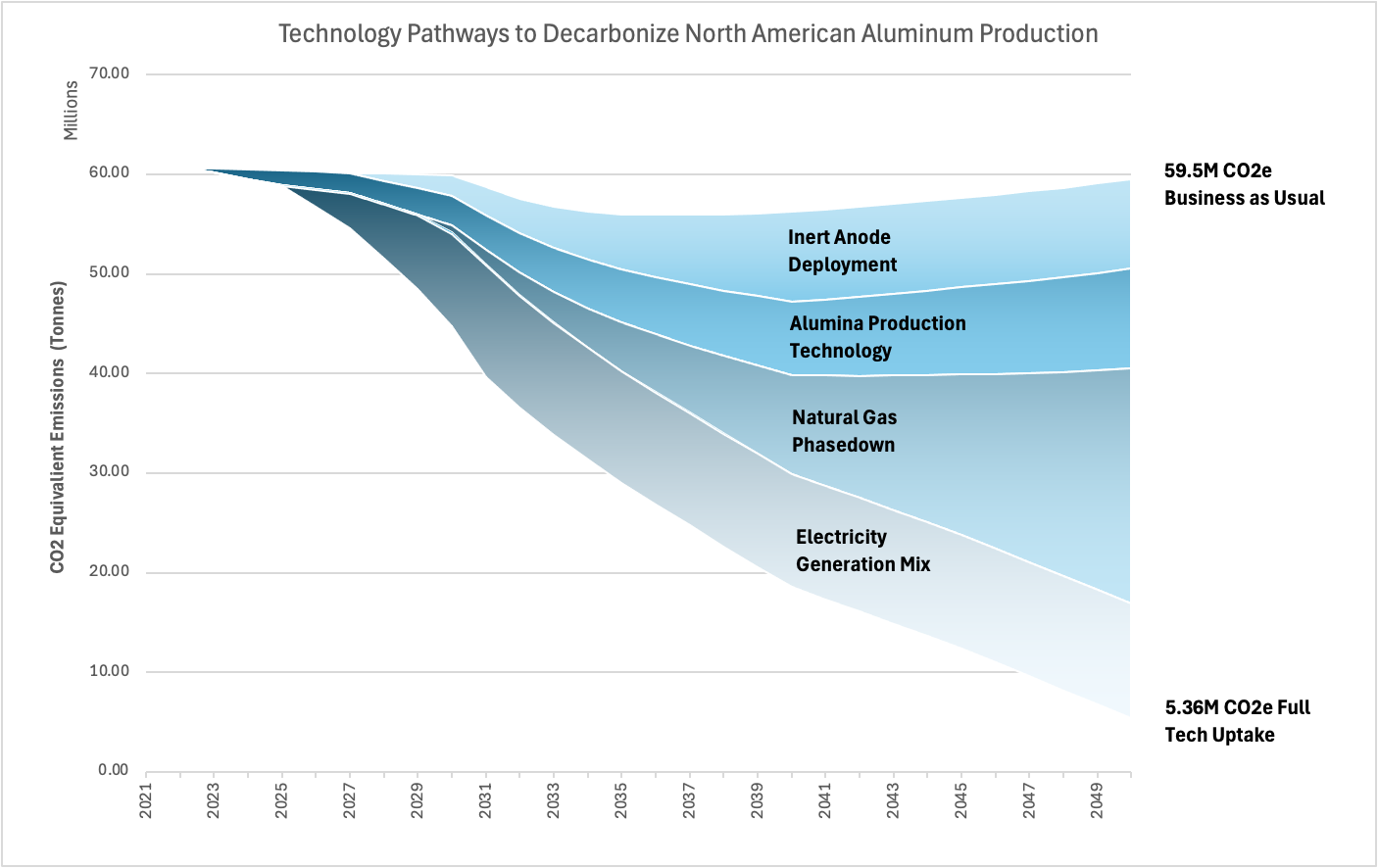
Pathways to Decarbonization: A North American Aluminum Roadmap
A new report highlights potential strategies to dramatically reduce carbon emissions in the North American (United States and Canada) aluminum industry by mid-century.
A new report, Pathways to Decarbonization: A North American Aluminum Roadmap, commissioned by the Aluminum Association and conducted by ICF lays out theoretical pathways to achieve industrywide carbon emission reductions consistent with the International Energy Agency’s (IEA) Net Zero by 2050 goals.
According to the roadmap, achieving net zero targets will require aluminum production emissions declines of 24% by 2030; 63% by 2040; and 92% by 2050 compared to a 2021 emissions baseline. Output is projected to increase by around 80% during this period—driven by growing demand for the metal to support sustainability efforts in various sectors.
Uniquely Positioned

The North American region is uniquely positioned to lead the way on global aluminum decarbonization. The report finds that the North American region has a significant first mover advantage in terms of its aluminum product carbon footprint.
Domestically produced aluminum and aluminum products are about half as carbon intensive as aluminum products made in the rest of the world. And aluminum products made in China are 2.5X more carbon intensive than North American aluminum, on average. Assuming the global aluminum industry commits to dramatic emission reductions efforts, it would still take 8 to 10 years for the rest of the world to produce semi-fabricated aluminum at the same carbon intensity as North America does today.
However, meeting such aggressive emissions reductions targets by mid-century will require an all-of-society approach to decarbonization and tens of billions of dollars in both public and private investment.
All-of-society Approach to Decarbonization
In total, about one-third of the required emissions reductions by 2050 can come from aluminum production technology improvements over which the industry itself has the most control. The other two-thirds of reduction must come from a combination of newly developed, affordable manufacturing technologies; deployment of state and federal research and infrastructure investment; and a national policy that supports the clean energy transition.
Pathways to Net Zero

The roadmap identifies several key pathways to reach the dramatic 2050 emissions reduction targets:
- Aluminum Production Technology and Efficiency Improvements: Development and deployment in new primary aluminum production technologies like inert anode smelting and the chloride process to remove direct emissions; changes to current alumina production methods; and energy efficiency improvements at the plant level.
- Alternative Fuels and Carbon Capture: Transition to new energy sources like green hydrogen; electrification of furnaces; and the deployment of carbon capture and storage technologies.
- Grid Decarbonization: Deployment of clean energy technologies to decarbonize the U.S. electric grid based on the U.S. Energy Information Administration (EIA) “high uptake” scenario enabled by the Inflation Reduction Act (IRA).
More Recycling, More Efficiently
Additionally, recycling more aluminum more efficiently can dramatically speed up industry emissions reductions. The model includes both a Constrained Scrap Utilization scenario (as a baseline) and Optimal Scrap Utilization scenario. The optimal utilization scenario eliminates an additional 160 million metric tons of CO2e emissions by 2050 on top of the 127 metric million tons of reduced CO2e emissions assumed under the constrained scenario.
This total reduction is equivalent to taking more than 68 million cars off the road for a year.
Looking Ahead
To support the transition to lower carbon, domestic aluminum production, federal and state policymakers and regulators must:
- Ensure the availability, abundance and affordability of clean energy to reduce emissions across aluminum manufacturing.
- Support policies and technologies that drive increased aluminum recycling like better scrap sorting, closed loop material management and recycling incentive programs.
- Enforce a fair international trade system and effective monitoring that provides transparency about the carbon emissions embedded in international trade flows.
- Provide research and development incentives for clean aluminum production technologies in primary aluminum smelting, alumina refining, scrap melting and semi-fabrication.
- Facilitate access to capital for manufacturers to deploy industrial decarbonization technologies at the plant level.
Resources
